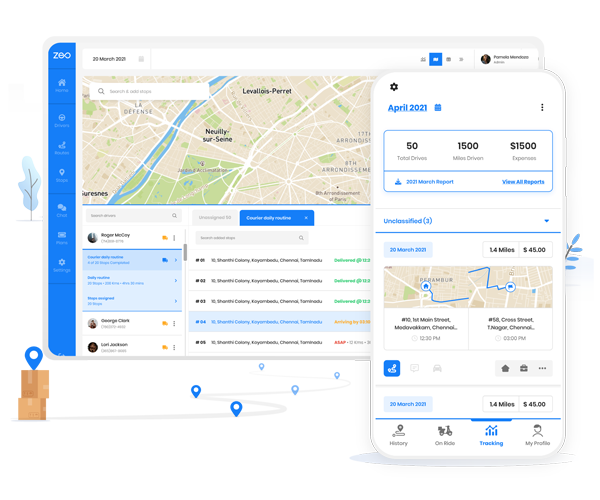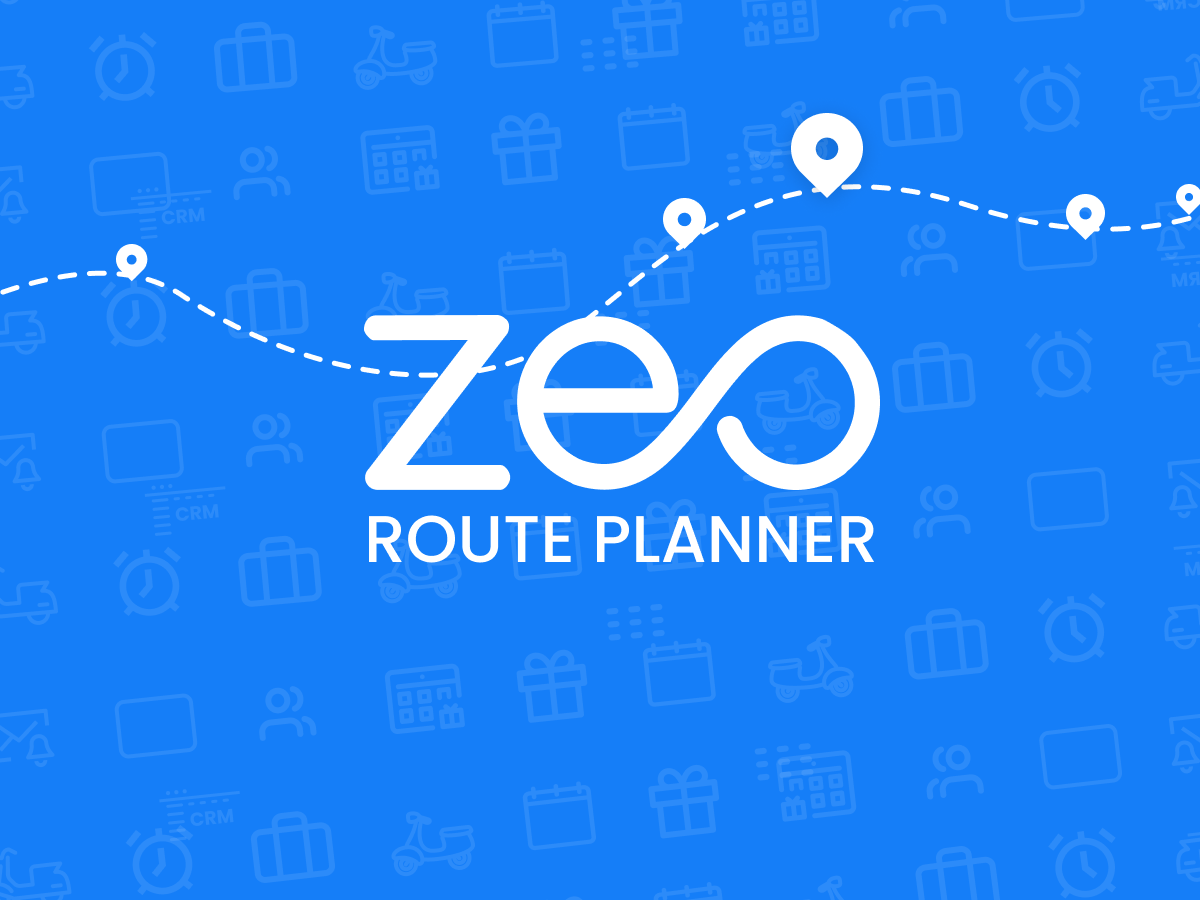Updated on: May 11, 2025
Transportation expenses account for a large portion of logistics costs. For instance, freight transportation (with fuel, driver, and vehicle) alone can constitute up to two-thirds of logistical expenses.
Over time, each dollar spent on moving goods can add up and shrink earnings, especially since the average profit margin in the transportation industry is approximately 7.4%.
Hence, managing and controlling these expenses can dramatically improve overall profitability. Managers, dispatchers, and business owners often seek new ways to track these outflows in real time.
This is where a Zeo Route Planner can lend a helpful hand.
Let’s explore in depth the transportation cost in logistics and ways how Zeo Route Planner helps minimize wasted resources.
Components of Transportation Cost
Transport expenses come in many forms, as mentioned below.
A single truck or van on the road racks up charges that go beyond fuel alone, and each part of that expense puzzle affects the total spend.
However, these expenses are segregated under three main headings, and evaluating each one facilitates effective cost management.
Fixed Costs
These are permanent costs that rarely change from month to month or year to year since these expenses remain relatively constant over time.
- Vehicle leases, insurance, and licensing need to be paid whether the vehicle runs one trip or a hundred.
- Depreciation of fleet assets grows over time as vehicles rack up mileage, and that lower resale value becomes part of the overall expense.
Variable Costs
Some expenses fluctuate based on operational factors as the costs rise or fall based on usage. A few common ones are listed below.
- Fuel, tolls, and driver wages often scale with the number of miles driven or deliveries made.
- Maintenance and repairs also vary with the distance traveled. Hitting more roads can lead to worn tires, oil changes, and other upkeep that becomes pricier over time.
Indirect Costs
Items that can feel less obvious but still add up in the long run, as these are ancillary expenses not directly linked to transportation, affect overall costs.
- Extra spending for customer service may arise when deliveries miss their scheduled window, prompting refund requests or additional support calls.
- Administrative overhead can grow if route-planning decisions are made without efficient technology. Mismanaged schedules force last-minute changes, which would then consume staff hours.
Zeo Route Planner for Managing These Expenses
Zeo Route Planner offers many features that help spot these costs more easily. Check out Zeo Mile Tracking or the Mobile Route Planner, which reveal how mileage data and thoughtful routing can give managers a clearer picture.
Once every fixed, variable, and indirect detail is visible, you can develop a plan to rein in unnecessary trips and keep money in the budget.
Zeo Route Planner as a Cost-Optimizing Tool
Zeo Route Planner stands out as a platform that reduces extra overhead in day-to-day deliveries and trucking. Its dashboard reveals route details, capacity usage, and driver assignments without a tangle of spreadsheets or manual calls.
Below are some of its key aspects that help bring down the last mile delivery cost.
- Auto Assign
A popular feature of the system is Auto-Assign. Dispatchers who handle multiple drop-offs often spend hours determining who goes where. Now, a single click can distribute deliveries to all available drivers.increase fuel savings
Save 2 Hours on Deliveries, Everyday!
Optimize routes with our algorithm, reducing travel time and costs efficiently.
Get Started for FreeThis approach emerges from Zeo’s built-in logic, which weighs distance, time windows, and existing schedules. Fewer back-and-forth phone calls mean less confusion and fewer idle vehicles.
- Capacity-Based Routing
Think of it this way: Every vehicle in your fleet has its limits—like how much it can carry, how far it can go, or how many orders it can handle in one run. Ignoring these limits often leads to problems, like wasted cargo space or trucks crawling because they’re packed too full.With Zeo, you’ll edit/enter vehicle details along with the capacity (maximum: driving time, orders, distance, etc.) as you add it to your fleet.
Zeo’s route planner addresses that head-on by factoring vehicle capacity into trip creation. The algorithms at work take this information and smartly match deliveries to the perfect vehicle. That way, your trucks aren’t running half-empty or overloaded, meaning less fuel burned and quicker trips.
- Personalized Communications
And then there’s tailored communication that tackles the problem of constant phone updates. Customers like to know when their packages will arrive, but staff can lose hours fielding calls or writing emails about delivery status.The real-time ETA by Zeo Route Planner not only keeps customers and drivers updated but also the managers (dispatchers). They stay on top of delivery status, freeing up time for more strategic work and paving the way for cost efficiency with a drop in customer service workload.
- Detailed Analytics & Reporting
Fuel bills are a massive pain point in logistics, right? Well, Zeo tackles that by giving you a clear breakdown of fuel consumed per route. You’ll quickly spot where fuel is wasted, helping you trim unnecessary expenses on the go.Zeo’s Route Analytics brings together everything: driver performance, trip efficiency, route deviations, and even vehicle idle times. No more scrambling through piles of spreadsheets.
Instead, Zeo puts every critical metric, such as distance, original ETA, updated ETA, distance Difference Between Stops, and much more, into a single clean view. This visibility lets you fix problems quickly by refining driver performance and unlocking new ways to slash transportation expenses.
Zeo Route Planner to Unlock Cost-Efficiency
Less money wasted means more profit, and that begins with accurate data. If managers don’t see where and why costs climb, unnecessary expenses linger.With Zeo Route Planner, you can close the profit-cost gap by highlighting extra miles, prolonged stops, or half-empty trucks.Once the real issues are discovered, a company can save hundreds each month. In fact, businesses have reported a $200 drop in monthly expenses using Zeo Route Planner.
Conclusion
Companies that ship goods often wonder how to lower expenses. Addressing each cost driver—fixed, variable, and indirect—can deliver the difference between tight margins and a healthy bottom line.
Zeo Route Planner bundles a range of features that help teams manage daily operations effectively. To reduce waste, it unites complex route assignments, capacity planning, automated messages, and data analytics.
The best way to see the effect is to give it a try.
Book a demo and see how last-mile delivery becomes cheaper and simpler with Zeo on board.

Are you a fleet owner?
Want to manage your drivers and deliveries easily?
Grow your business effortlessly with Zeo Routes Planner – optimize routes and manage multiple drivers with ease.

increase fuel savings
Save $200 on fuel, Monthly!
Optimize routes with our algorithm, reducing travel time and costs efficiently.
Get Started for Free
























